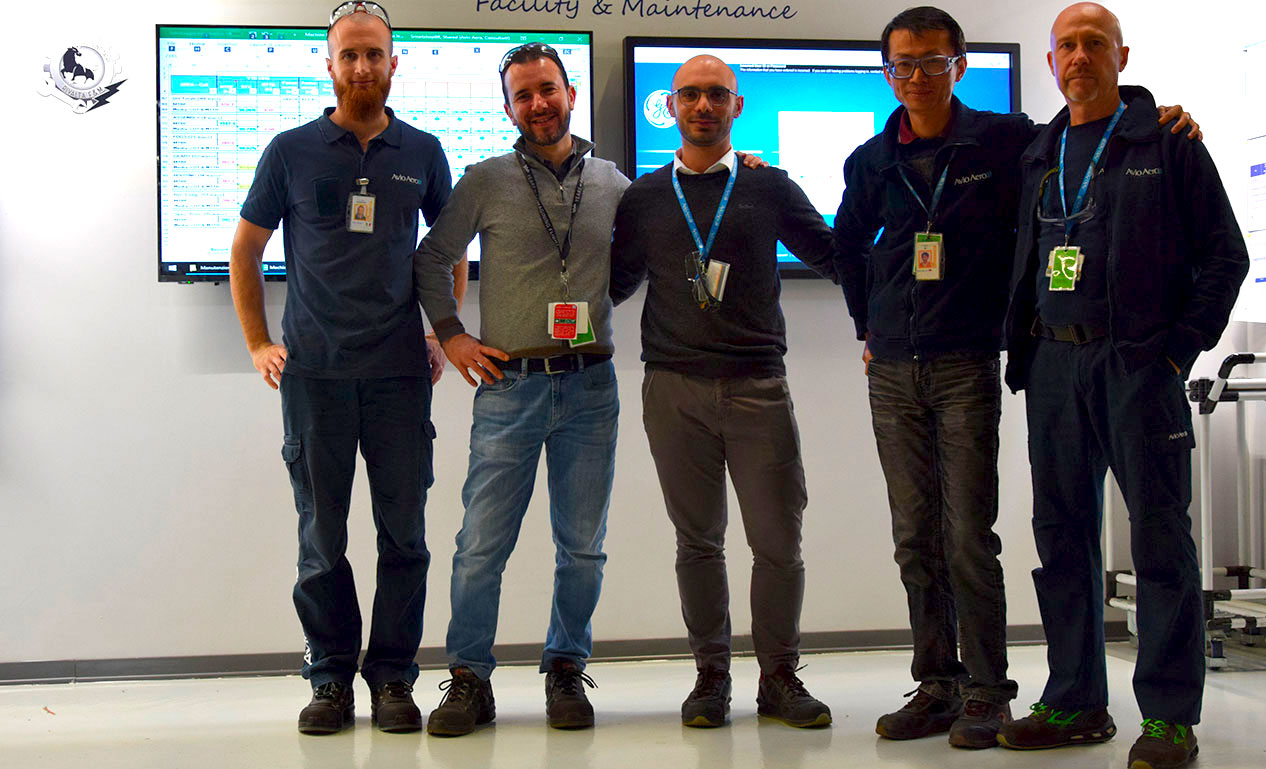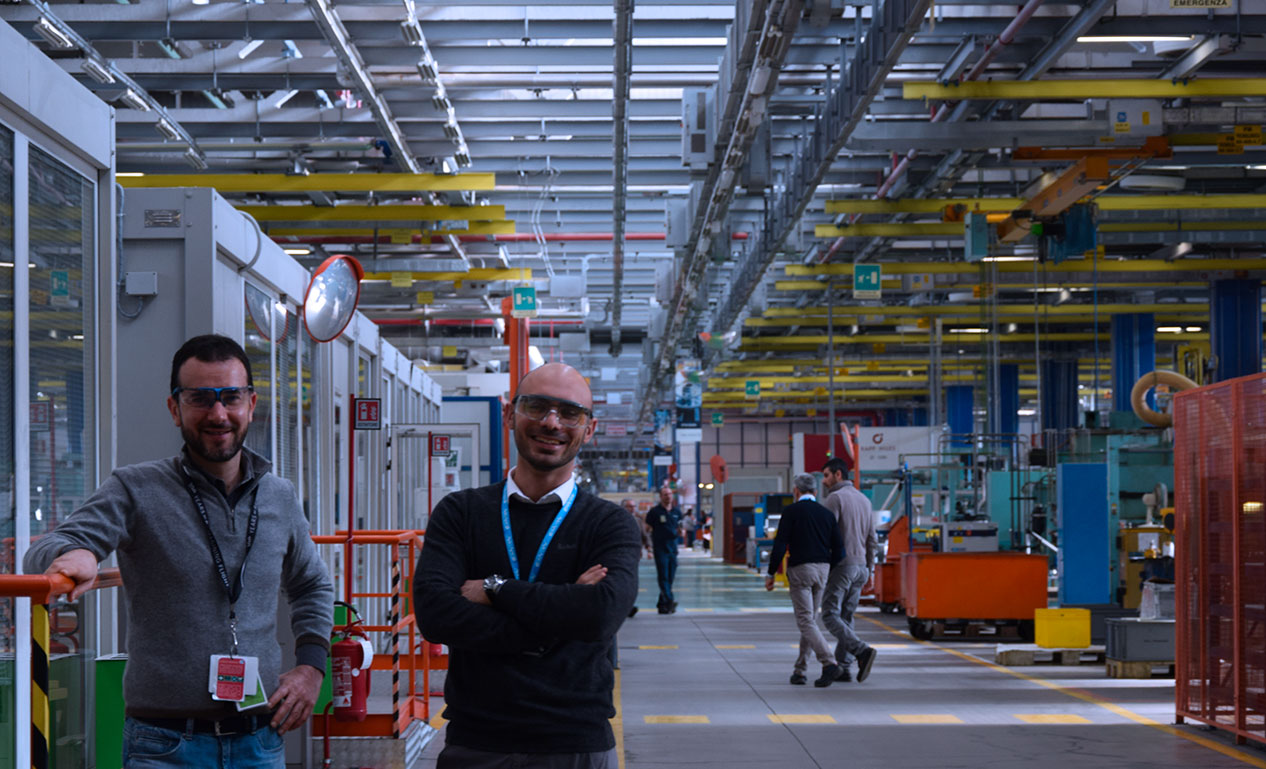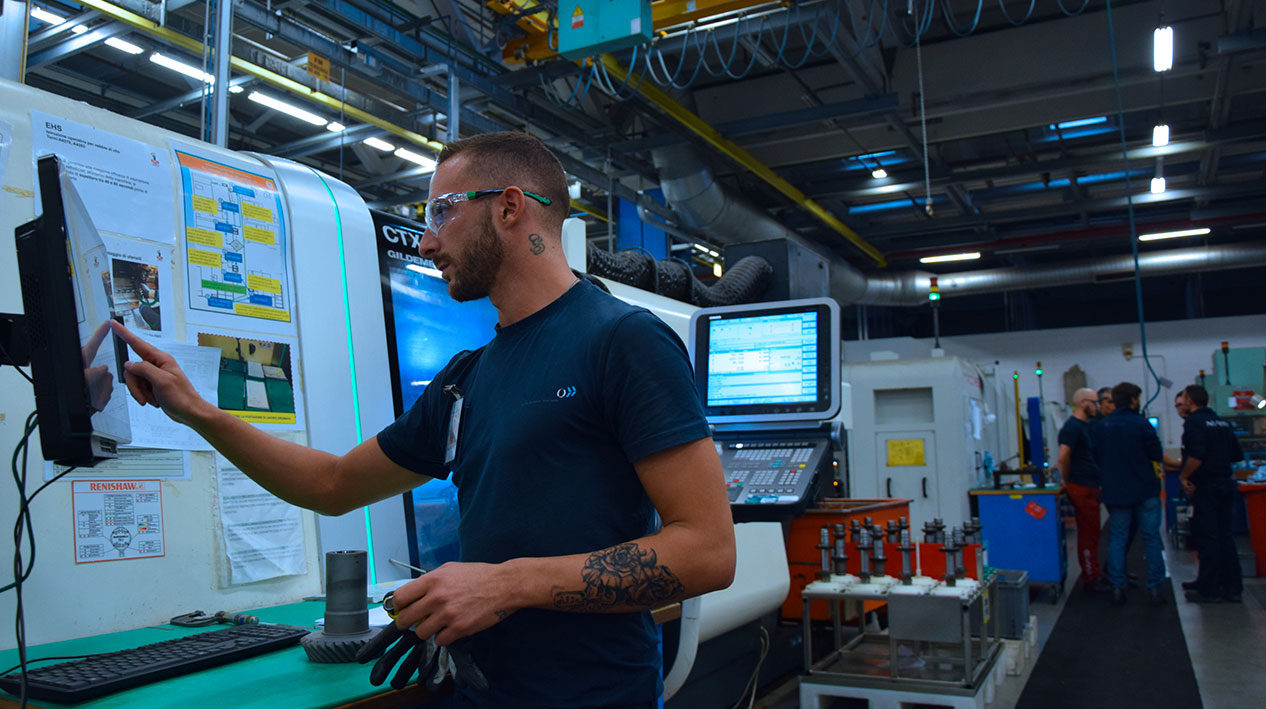Invent
How are you today, Machine?
At the Avio Aero plants, the digital transformation goes on and involves also the teams that guarantee the efficiency and performances of both production and machinery.
Nov 2019
Once again, the road toward the intelligent factory is a serial process, consisting of steps, discoveries and new applications. It is a transformation that gradually involves even more professional figures, which means people and teams inside an industrial company: namely, an organization that revolves around the place where its products come to life, the factory.
Inside Avio Aero's factories - which have increasingly become equipped with digital tools and apps for daily work along this digital path - a new application is supporting and facilitating the tasks of a crucial function for production, the Maintenance. At Avio Aero’s factories in northern and southern Italy as well as in Poland, a host of about 150 maintenance specialists is active and dedicated to maintaining the operation and efficiency of extremely valuable assets that are used to produce aircraft engine components: the machinery.
Just inside the Rivalta di Torino plant (the company's headquarters), over a thousand operators and production technicians operate on more than 750 machines (small or large sized) and are assisted by 42 maintenance technicians. These machines are known as the "machine fleet": they refer to all the systems and machinery that perform machining and mechanical operations, as well as chemical or thermal treatments, on metal parts that are fit into the perfect mechanism of an aircraft engine and that will put people and things into flight.
DAM (Digital Autonomous Maintenance) is the application that the Maintenance team, in collaboration with the Avio Aero team of IT specialists and developers, has added to the kit of digital tools available to the production department and, above all, to the operators and supervisors on every shop floor. "Most of the machinery in our factories are a CNC type that generates, processes and analyzes data," explains Matteo Nestola, Staff Technical Product Manager. "We only needed to associate the touch screens that the operators already use on almost all the machines to simultaneously contribute to the generation and analysis of data for each processed part, to evolve the potential and to allow them to digitally perform preventive maintenance of the machinery."
So, the Digital Technology team added Maintenance to its internal customers’ portfolio, aimed at offering solutions to digitalize the processes and thus assimilating the concept of Total Productive Maintenance. That is, the pursuit of maintenance effectiveness through the role of operators and supervisors who autonomously verify the operating conditions of the machines on which they operate, drastically reducing the risk of malfunction or, worse, breakage.
"With DAM, our colleagues on each production line can perform self-maintenance actions, and, simply touching the screen, they can tell if everything is working regularly or if there are any problems," says Riccardo Zaccaron, Senior Equipment Maintenance Manager. "Therefore, these teams can report anomalies before the latter become serious failures. Or, they can report them to us at any time from the screen and plan prompt service."
DAM creates a direct link between operators, supervisors and the Maintenance Team. There is no longer need to check or inspect every single machine. Everything is just a click away"
Zaccaron and his colleagues in Maintenance have worked with the Digital Technology team for a long time – as well as with operators and production line managers - to adapt and implement the new app on the screens used in the factory. Today in Rivalta, more than 120 machines (about 16% of the total) use DAM. Since June 2019, there have been at least 100 reports, which in 80% of the cases have prevented serious failures, and therefore interruptions in production, encouraging timely action.
The new tool has been proactively implemented also in Bielsko Biala, Borgaretto, Brindisi and then Pomigliano d’Arco, with the same collaboration approach by the local teams, sharpened with tests and contributions. "DAM creates a direct link between the operator, supervisor and, finally, the Maintenance Team. There is no longer a need to go to every machine in the factory to perform checks and inspections. Everything is just a click away," concludes Zaccaron.
Behind the touch of a finger on a screen lies the programming and development work that today, within industrial companies, follows a scheme that is becoming ever more typical for computer professionals. The IT professionals dialogue with the internal customers from other departments, who are no longer just computer users. They collect the needs and create innovative architectures thanks to systems that live on the cloud (because at Avio Aero this technology has already been used for other innovative tools, thanks to the collaboration with Amazon Web Service and other software houses).
"The result we have obtained," continues Nestola, "is a user-friendly app, which allows us to communicate and intervene in real-time. This allows the Digital team, thanks to a CICD (Continuous Integration Continuous Development) method, to model the operation of the digital tool more easily, quickly and with greater freedom of intervention and modification based on the needs of the people who use it daily".
The LEAN culture - a philosophical and methodological mantra for every modern industry that aspires to top performance and process efficiency - has expanded into the way teams and company functions work and think, even though their work is not directly performed into production. They finally understand how much it can affect the latter and ultimately the success of the whole.
Sebastiano Sparacio has been with the company since 2012. He is a young, highly skilled expert in mechanical machining at the Conical Gears area for aircraft engine transmissions in Rivalta and he was one of the early adopters of this new tool. "Our line has about 50 people working on three shifts. We have frequent exchanges with others working in maintenance and technology," he says, to highlight how his area is often taken into consideration when there is a need to introduce technological innovation.
"Since I joined the company, the machines we work on have changed completely. They are more modern even in terms of methods and processes: in terms of digital controls, networking, and automatic measurements on these things… we are truly ahead on an industrial level."







